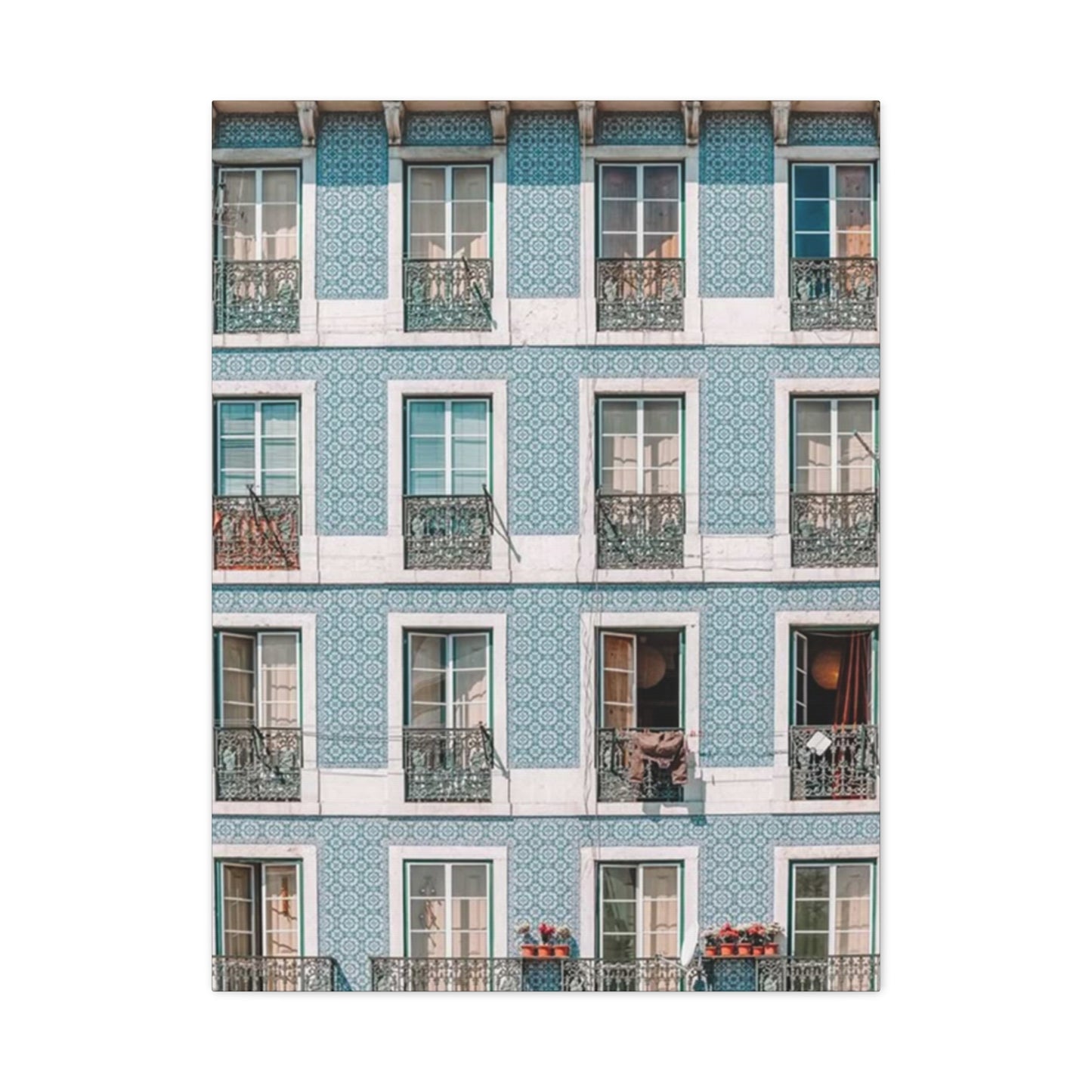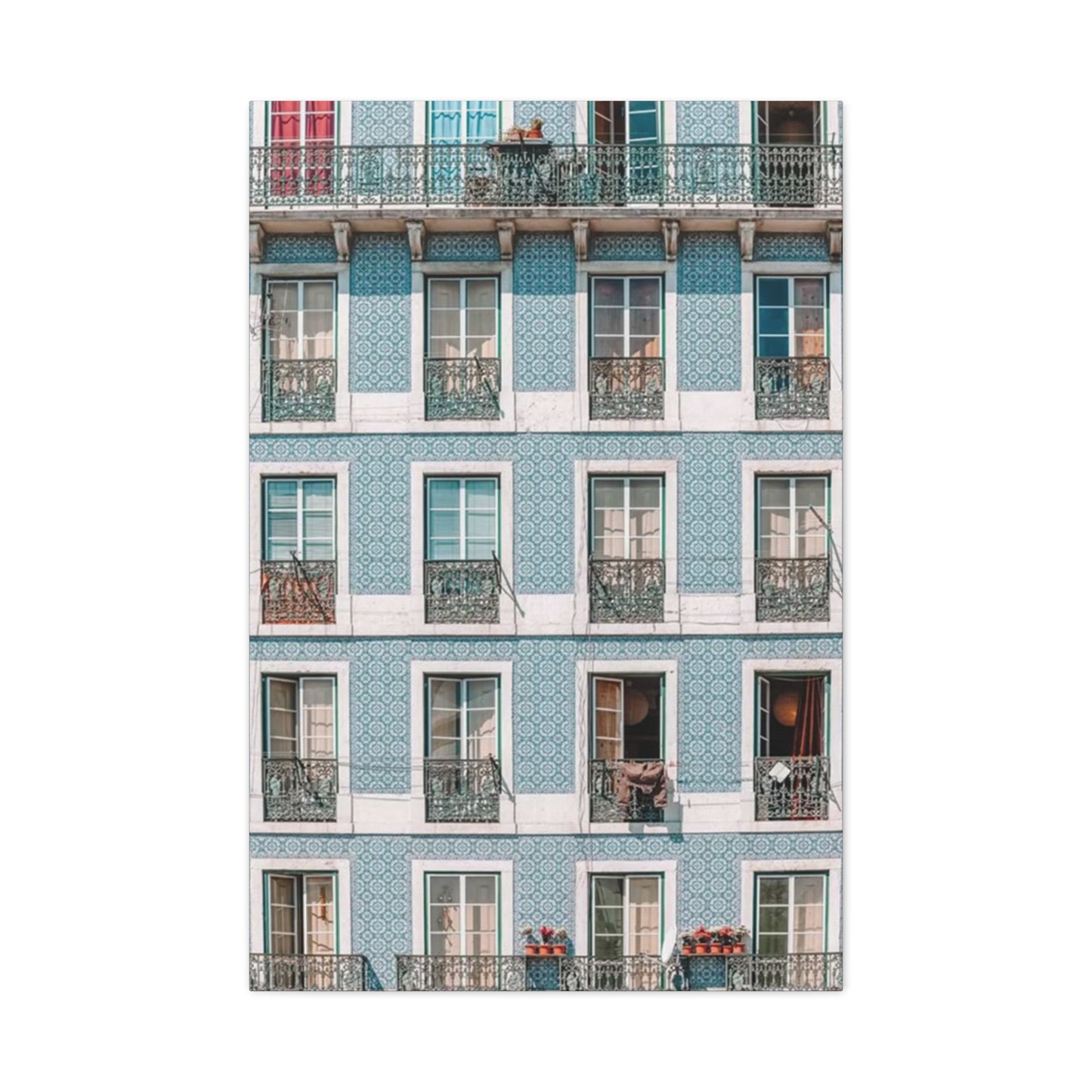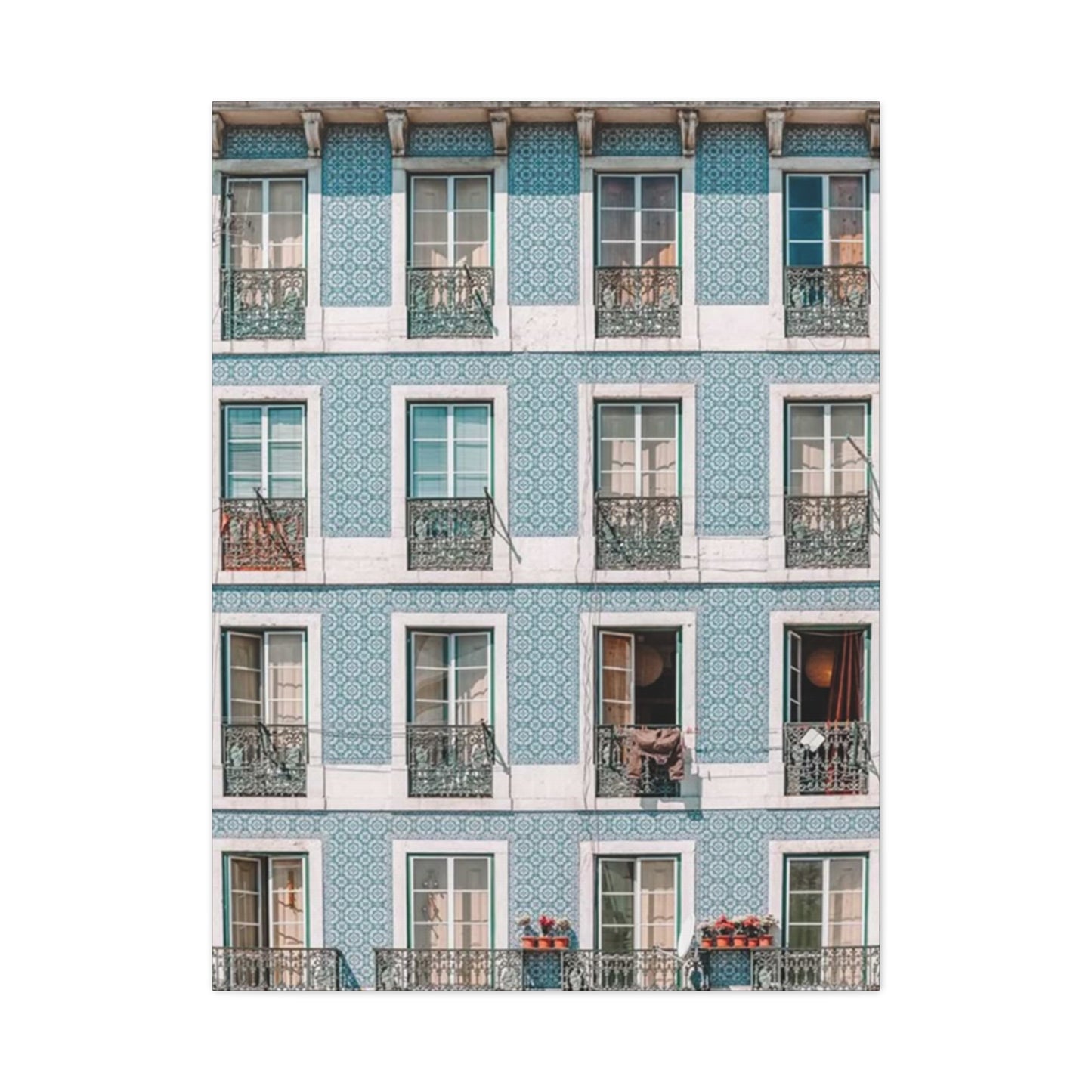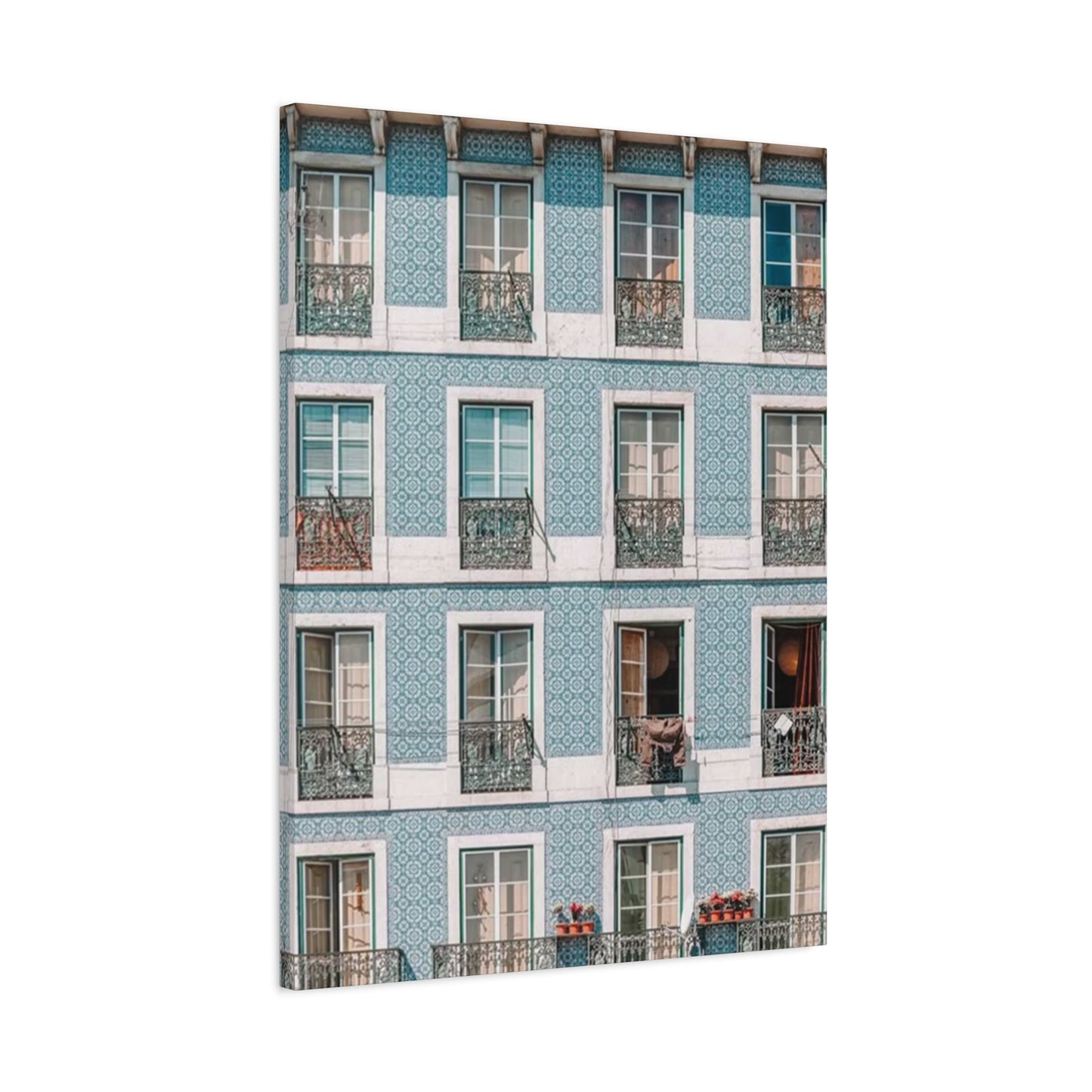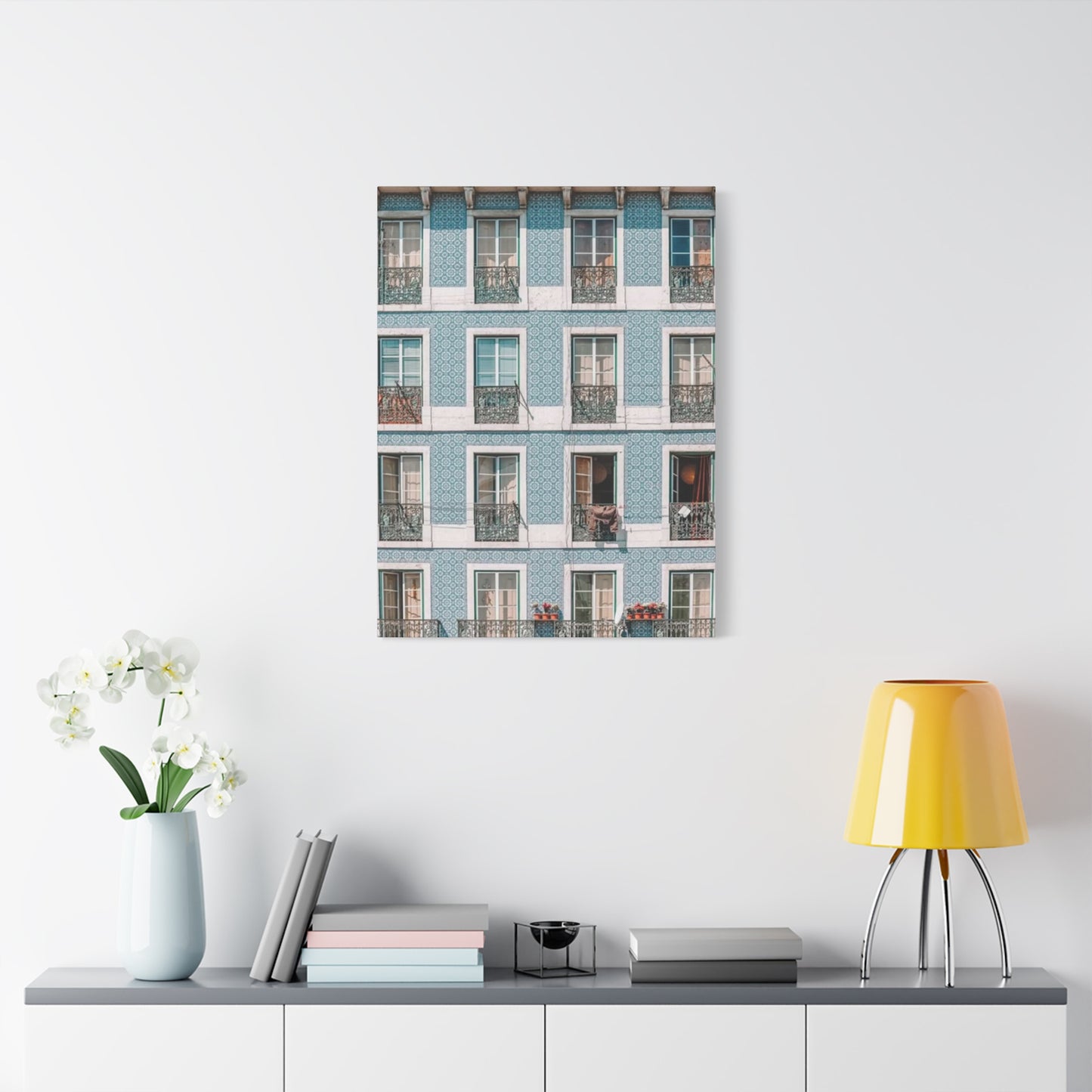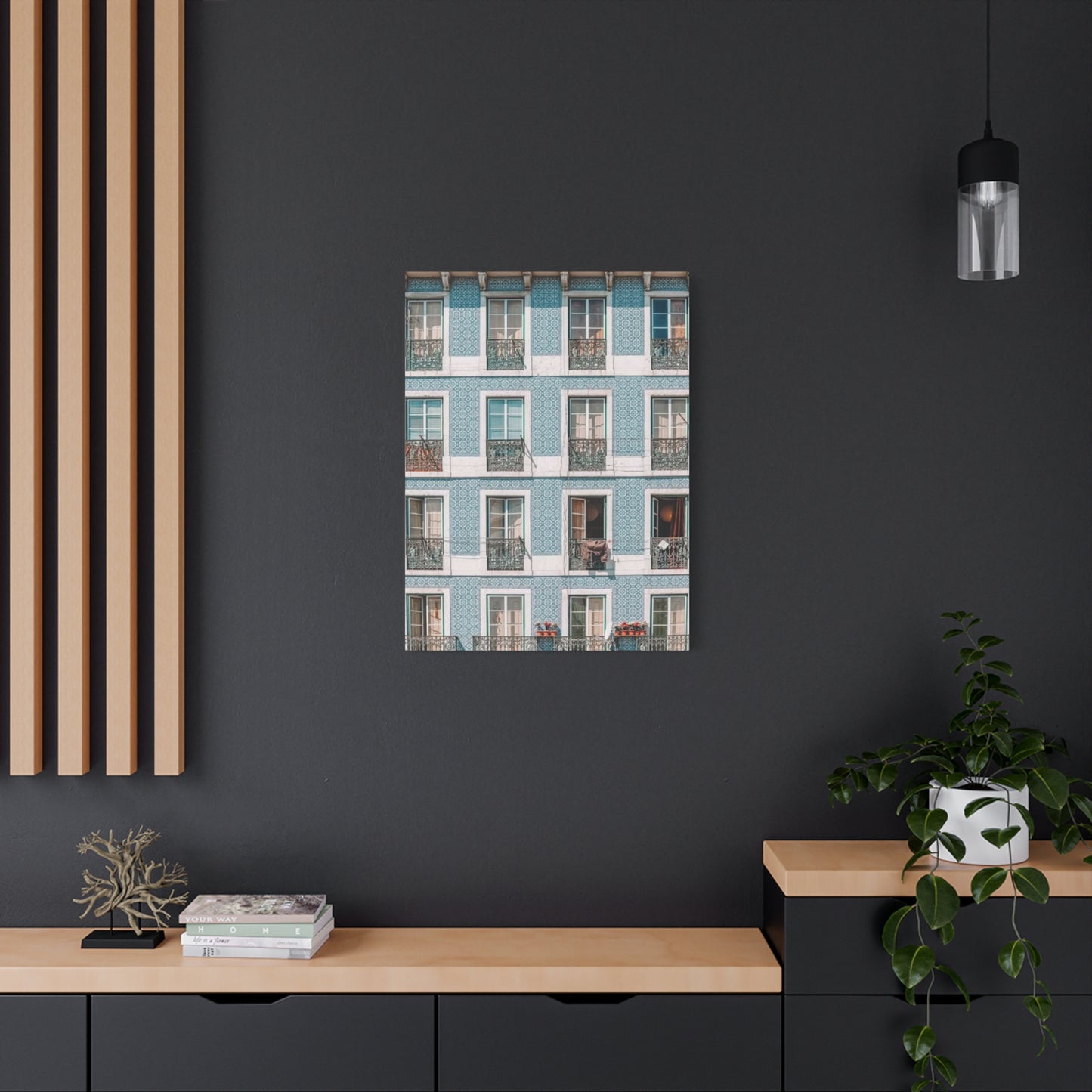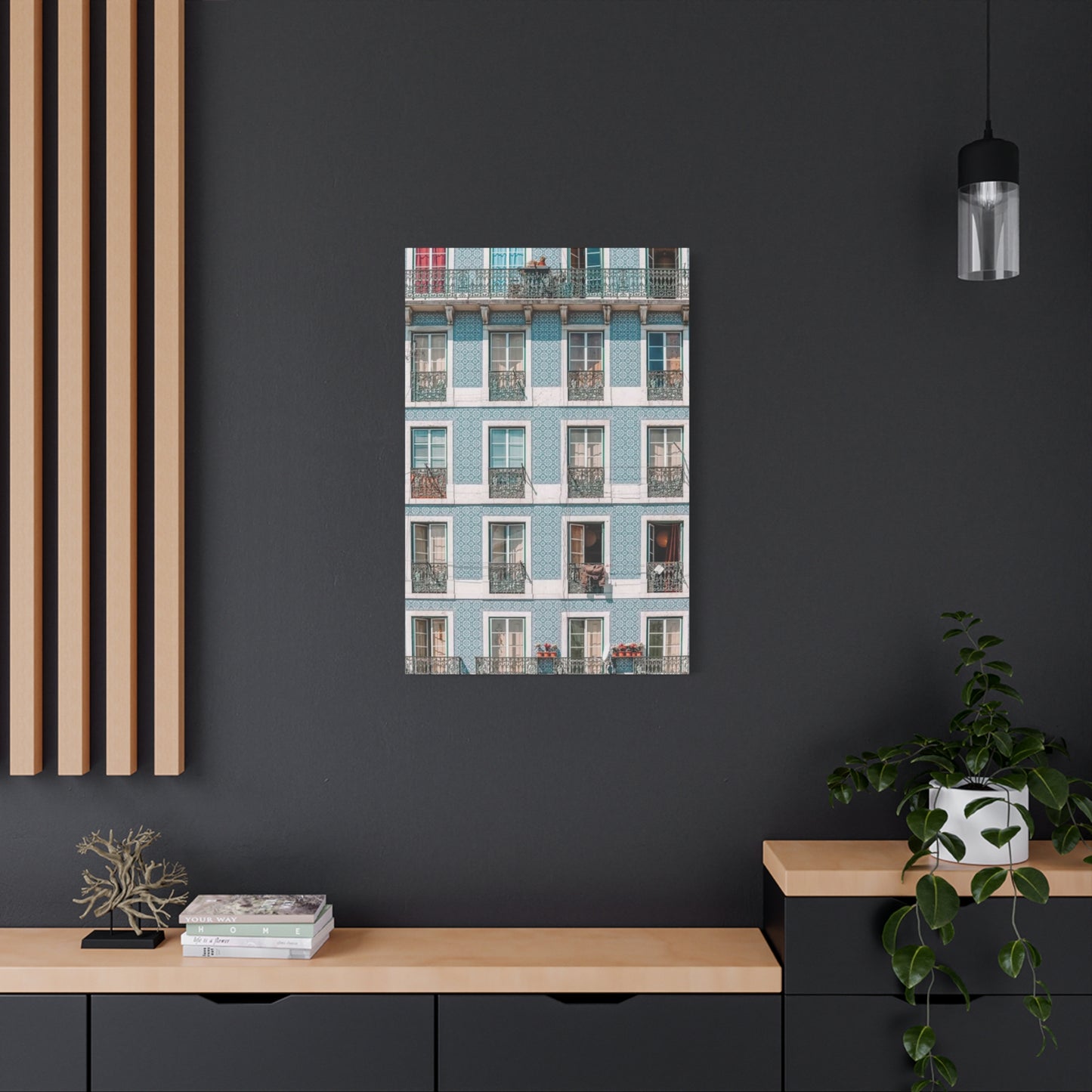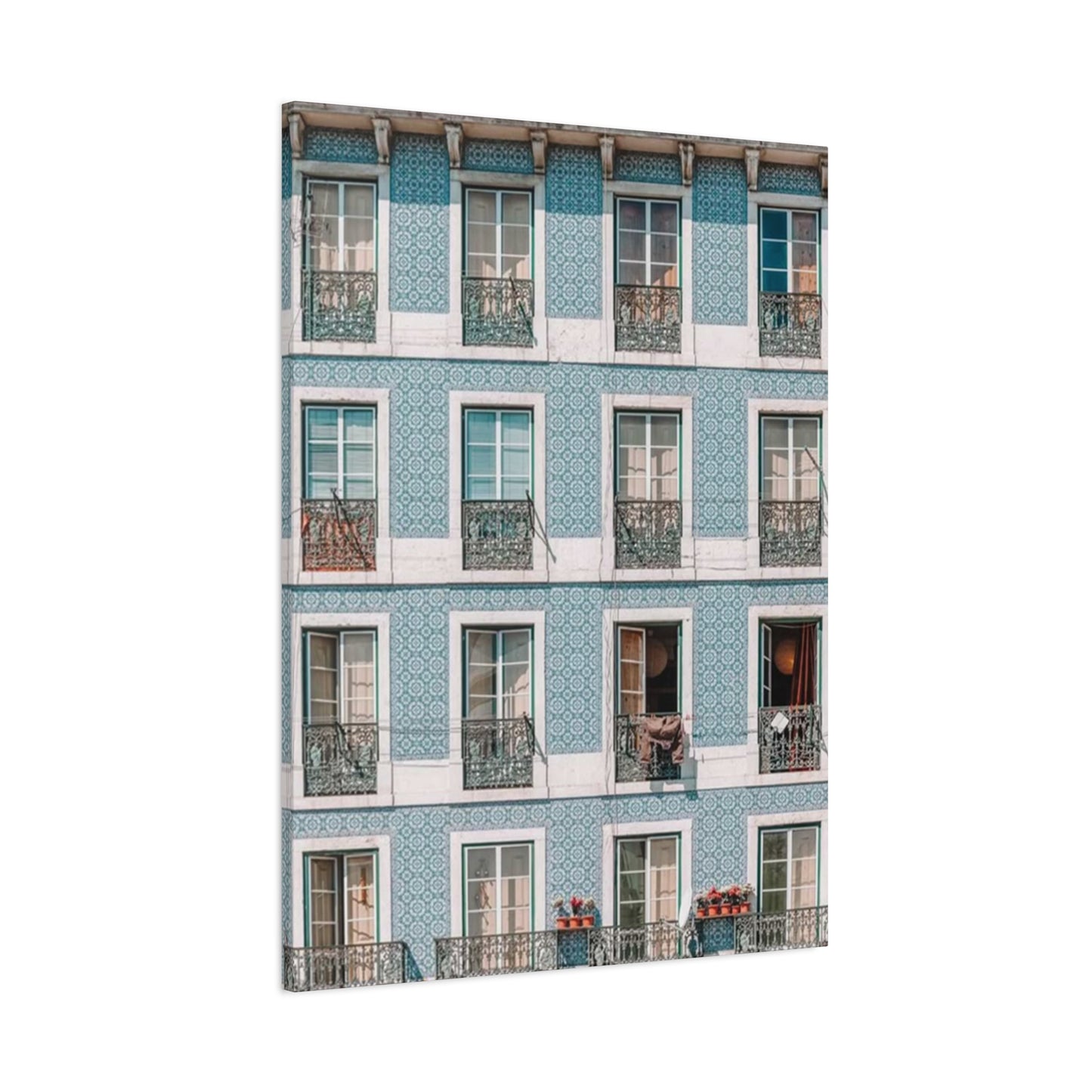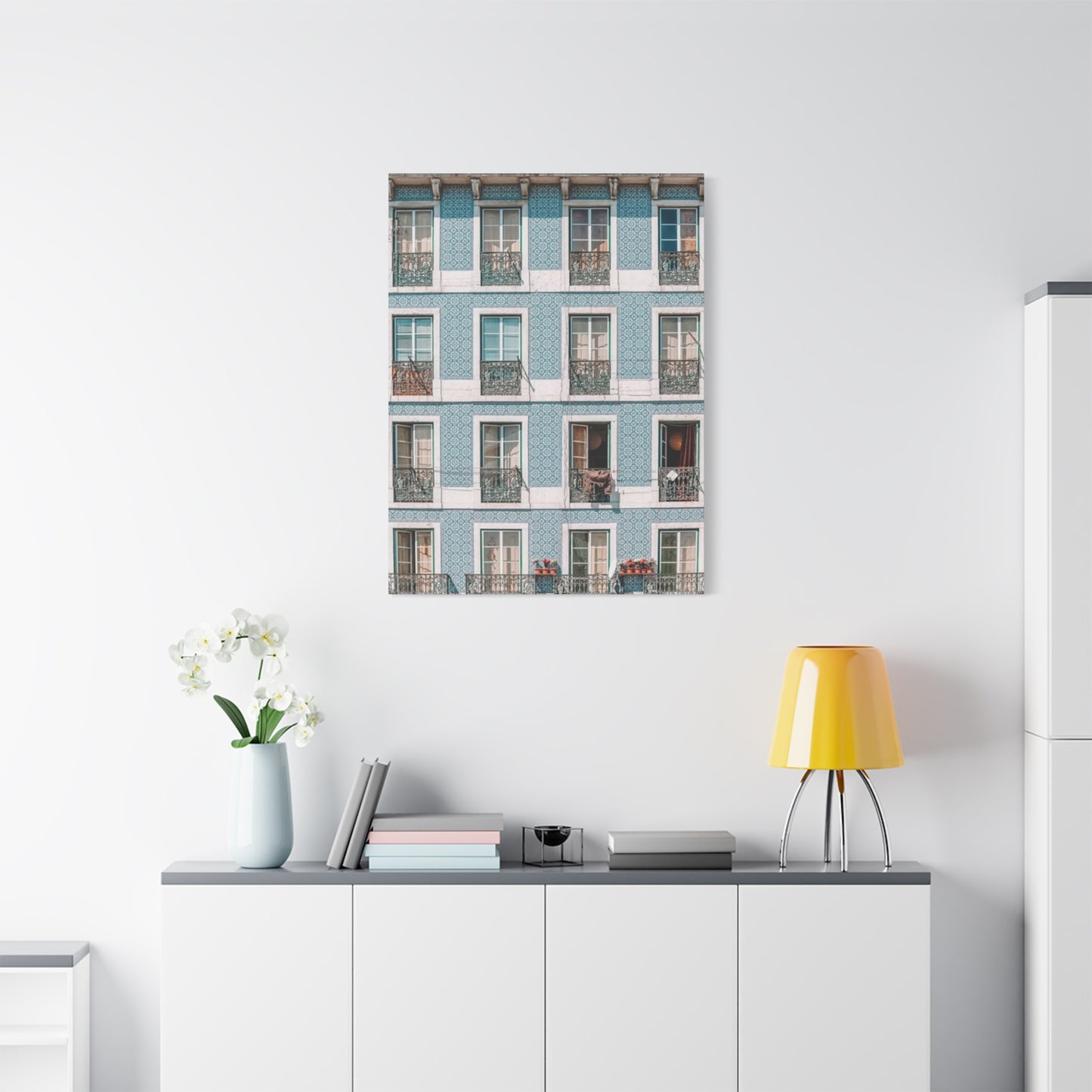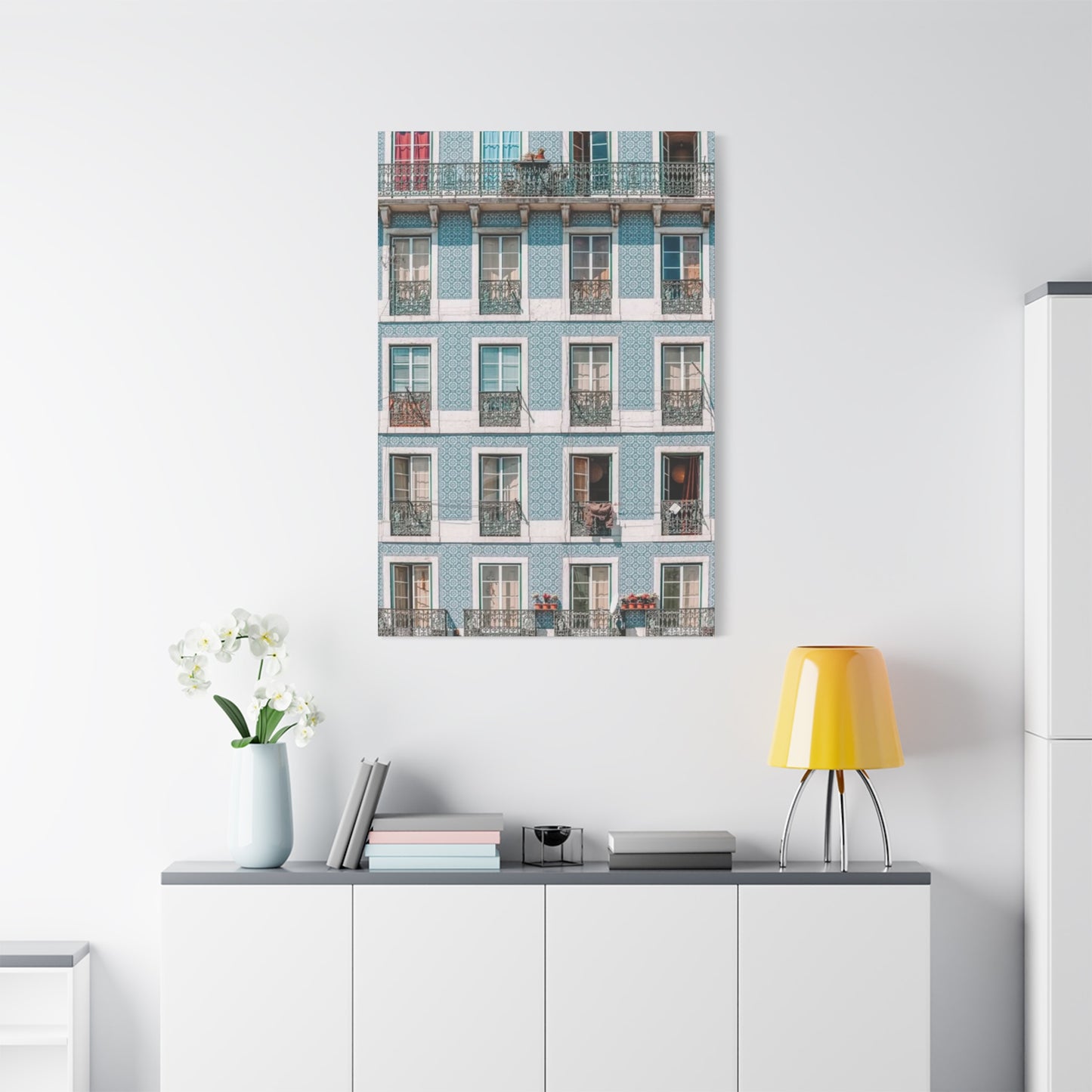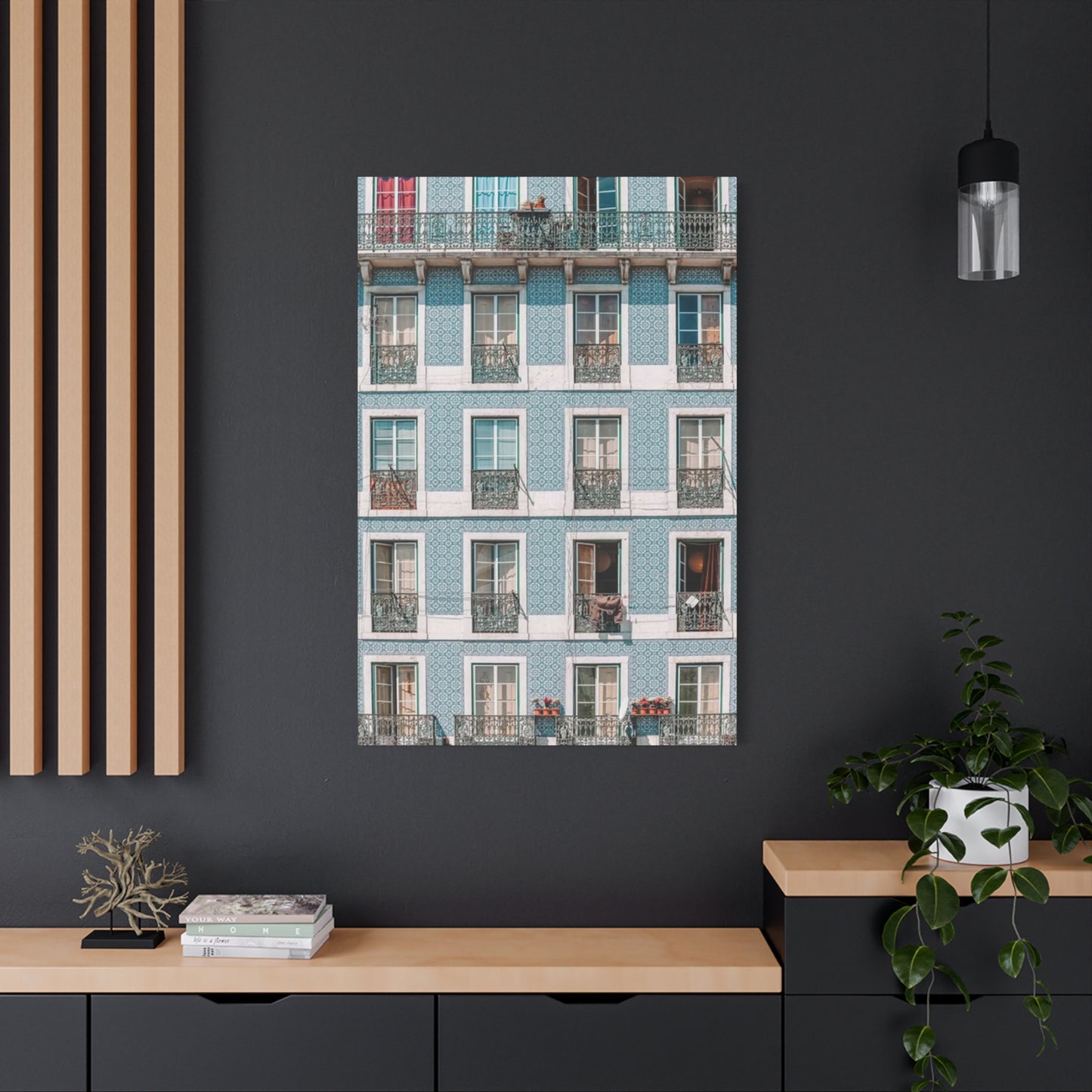Spanish Architecture Wall Art: Bringing Iberian Beauty to Your Living Space
Spain's architectural landscape represents one of the world's most diverse and captivating collections of building styles, artistic movements, and cultural influences. From the whimsical curves of Antoni Gaudí's masterpieces to the intricate geometric patterns of Moorish palaces, Spanish architecture offers an endless source of inspiration for wall art enthusiasts. The rich tapestry of Spanish architectural heritage spans centuries, incorporating Roman foundations, Islamic innovations, Gothic grandeur, Renaissance refinement, and modern avant-garde expressions. This architectural diversity translates beautifully into wall art, allowing homeowners and art collectors to bring the essence of Spain's most iconic structures into their personal spaces.
The appeal of Spanish architectural wall art extends far beyond mere decoration. These artistic interpretations serve as windows into Spain's complex history, cultural evolution, and artistic achievements. Each piece tells a story of the civilizations that have shaped the Iberian Peninsula, from the Visigothic kingdoms to the Islamic Caliphates, from the Christian Reconquista to the modern democratic era. When displayed in homes, offices, or public spaces, Spanish architectural art creates an atmosphere of sophistication, cultural appreciation, and artistic refinement that resonates with viewers on multiple levels.
Contemporary interior designers increasingly recognize the versatility and impact of Spanish architectural wall art. These pieces complement various design styles, from Mediterranean and rustic themes to modern minimalist aesthetics. The warm earth tones, intricate details, and geometric patterns found in Spanish architecture translate seamlessly into wall art that enhances both traditional and contemporary interiors. Whether featuring the soaring spires of Gothic cathedrals, the colorful tile work of Modernist buildings, or the weathered stone facades of ancient villages, Spanish architectural art adds depth, character, and visual interest to any space.
The photographic and artistic documentation of Spanish architecture has evolved significantly with technological advances. High-resolution photography, digital art techniques, and innovative printing methods now allow for incredibly detailed and vibrant reproductions of architectural elements. Artists and photographers can capture the subtle play of light and shadow across ancient stone walls, the brilliant blues and greens of ceramic tiles, and the intricate ironwork that adorns Spanish balconies. These technological capabilities ensure that Spanish architectural wall art maintains the authenticity and emotional impact of experiencing these structures in person.
Magnificent Gaudí-Inspired Artistic Creations for Interior Spaces
Antoni Gaudí's revolutionary approach to architecture has inspired countless artists and photographers to create wall art that captures the essence of his organic, nature-inspired designs. The distinctive characteristics of Gaudí's work, including flowing lines, vibrant mosaics, and sculptural forms, translate beautifully into artistic representations suitable for modern interiors. Sagrada Familia, with its intricate stone facades and towering spires, provides endless inspiration for photographers and artists seeking to create compelling wall art. The interplay of light filtering through the basilica's stained glass windows creates dramatic photographic opportunities that result in breathtaking wall art pieces.
Park Güell offers another rich source of inspiration for Gaudí-themed wall art. The park's colorful ceramic benches, whimsical architectural elements, and panoramic views of Barcelona provide diverse subjects for artistic interpretation. Artists often focus on the intricate mosaic work, known as trencadís, which features broken ceramic pieces arranged in flowing, organic patterns. These mosaic details translate exceptionally well into close-up photographic prints that showcase the incredible craftsmanship and artistic vision that defines Gaudí's work.
Casa Batlló and Casa Milà represent pinnacles of residential architectural artistry that inspire wall art creators worldwide. The undulating stone facade of Casa Milà, nicknamed La Pedrera, offers dramatic opportunities for photographers to capture the building's sculptural qualities. The play of light and shadow across the building's curves creates dynamic compositions that work exceptionally well as large-format wall art. Similarly, Casa Batlló's colorful tile facade and distinctive architectural details provide rich subject matter for both photographic and painted artistic interpretations.
The influence of Gaudí's architectural philosophy extends beyond literal representations of his buildings. Contemporary artists create abstract interpretations that capture the organic essence of his designs while translating them into modern artistic expressions. These pieces might feature flowing lines reminiscent of Gaudí's curves, color palettes inspired by his ceramic work, or compositions that echo the natural forms he incorporated into his architecture. Such interpretations allow viewers to experience the spirit of Gaudí's vision while enjoying contemporary artistic expressions suitable for modern living spaces.
The technical aspects of creating Gaudí-inspired wall art require careful attention to color reproduction and detail preservation. The vibrant blues, greens, and golds found in Gaudí's ceramic work demand high-quality printing processes that maintain color accuracy and saturation. Professional photographers often use specialized equipment and techniques to capture the full range of colors and textures found in Gaudí's buildings. The resulting images serve as the foundation for stunning wall art pieces that bring the magic of these architectural masterpieces into residential and commercial spaces.
Contemporary Spanish Architectural Expressions in Artistic Prints
Modern Spanish architecture represents a dynamic fusion of traditional elements with cutting-edge design principles, creating compelling subjects for contemporary wall art. The works of architects like Santiago Calatrava, Ricardo Bofill, and Rafael Moneo have redefined Spain's architectural landscape while providing rich inspiration for artistic documentation. These modern structures often feature bold geometric forms, innovative materials, and striking visual compositions that translate exceptionally well into wall art suitable for contemporary interiors.
The Valencia City of Arts and Sciences complex, designed primarily by Santiago Calatrava, exemplifies the dramatic potential of modern Spanish architecture as wall art subject matter. The complex's flowing white structures, inspired by organic forms and engineering principles, create stunning photographic opportunities. The buildings' reflections in surrounding water features add another dimension to artistic compositions, while their sculptural qualities make them ideal subjects for both realistic and abstract artistic interpretations. The contrast between the stark white architecture and the blue Spanish sky creates visually striking images perfect for modern wall art applications.
Barcelona's contemporary architectural scene provides numerous examples of innovative Spanish design that inspire wall art creation. The Torre Glòries, formerly known as Torre Agbar, with its colorful LED facade and distinctive bullet shape, represents the intersection of technology and architectural artistry. The building's nighttime illumination creates particularly dramatic photographic opportunities, resulting in wall art that captures the dynamic energy of modern Barcelona. Similarly, the Diagonal ZeroZero building and other contemporary structures in the city's 22@ district offer compelling subjects for architectural photography and artistic interpretation.
Madrid's modern architectural landmarks contribute significantly to the contemporary Spanish architectural art movement. The CaixaForum Madrid, with its striking vertical garden and distinctive architectural profile, provides unique opportunities for artistic documentation. The building's innovative design, which appears to float above ground level, creates visually compelling compositions that work exceptionally well as wall art. The integration of natural elements with modern architectural forms reflects contemporary Spanish architecture's emphasis on sustainability and environmental integration.
The documentation of contemporary Spanish architecture requires different techniques than traditional architectural photography. Modern buildings often feature reflective surfaces, dynamic lighting systems, and complex geometric forms that challenge photographers to develop innovative approaches to capture their essence. High dynamic range photography, long exposure techniques, and creative composition strategies help artists create wall art that conveys the innovative spirit of contemporary Spanish architecture while maintaining visual appeal for residential and commercial display.
Documenting Spain's Historic Architectural Heritage Through Visual Arts
Spain's historic architecture represents a millennium of cultural exchange, artistic innovation, and architectural evolution that provides endless inspiration for wall art creation. The country's architectural heritage encompasses Roman aqueducts and amphitheaters, Visigothic churches, Islamic palaces, Romanesque monasteries, Gothic cathedrals, Renaissance palaces, and Baroque facades. Each historical period contributed unique elements to Spain's architectural vocabulary, creating a rich tapestry of styles and influences that contemporary artists and photographers continue to explore and document.
The Alhambra in Granada stands as perhaps the most photographed and artistically interpreted architectural complex in Spain. The palace's intricate Islamic geometric patterns, delicate stucco work, and serene courtyards provide countless opportunities for artistic exploration. The interplay of light and shadow in the Alhambra's halls and courtyards creates ever-changing photographic conditions that result in unique artistic interpretations. The complex's integration with its natural surroundings, including the famous gardens and water features, adds layers of complexity and beauty that artists continue to explore through various media and techniques.
The Cathedral of Santiago de Compostela represents Gothic architecture at its most sublime, offering numerous opportunities for dramatic architectural photography and artistic interpretation. The cathedral's elaborate stone facades, towering spires, and intricate sculptural details provide rich subject matter for close-up detail studies as well as grand architectural compositions. The building's significance as the destination of the Camino de Santiago pilgrimage route adds spiritual and cultural dimensions to artistic interpretations, making wall art featuring this architectural masterpiece particularly meaningful for many viewers.
Seville's architectural treasures, including the Alcázar, the Cathedral, and the Giralda tower, showcase the layered history of Spanish architecture. The Alcázar's Mudéjar architecture represents a unique fusion of Islamic and Christian artistic traditions that creates visually stunning compositions for wall art. The intricate tile work, carved plasterwork, and geometric patterns found throughout the palace complex offer endless possibilities for artistic documentation and interpretation. The play of light filtering through ornate screens and reflecting off ceramic surfaces creates dynamic photographic opportunities that result in compelling wall art pieces.
The preservation and documentation of Spain's historic architecture through wall art serves important cultural and educational purposes. High-quality photographic documentation helps preserve visual records of architectural details that may be threatened by time, weather, or human activity. Artistic interpretations of historic buildings help maintain public awareness and appreciation for Spain's architectural heritage while making these treasures accessible to audiences who may never visit Spain in person. This democratization of architectural beauty through wall art plays a crucial role in cultural preservation and education.
Dynamic Street Life and Urban Architecture in Spanish City Scenes
Spanish cities pulse with life, energy, and architectural diversity that creates compelling subjects for urban photography and street scene wall art. The vibrant interaction between people and architecture in Spanish urban environments produces dynamic compositions that capture both the physical beauty of buildings and the cultural vitality of Spanish city life. From the narrow medieval streets of Toledo to the grand boulevards of Madrid, Spanish cities offer photographers and artists rich opportunities to document the relationship between architecture and daily life.
Barcelona's Las Ramblas epitomizes the dynamic relationship between urban architecture and street life that makes Spanish city scenes so compelling for wall art. The tree-lined pedestrian mall, flanked by historic buildings with distinctive architectural details, creates a stage for constant human activity. Street performers, outdoor cafes, flower stalls, and the endless parade of pedestrians provide dynamic elements that complement the architectural backdrop. Photographers capturing these scenes often focus on the interplay between the permanent architectural elements and the ever-changing human drama that unfolds against them.
Madrid's Plaza Mayor represents urban architectural grandeur combined with intimate human scale that creates ideal conditions for compelling street scene photography. The plaza's uniform red buildings with their distinctive arcades and balconies provide a consistent architectural framework that frames the varied activities taking place within the space. Markets, festivals, concerts, and daily social interactions create layers of activity that photographers can document from multiple perspectives and at different times of day to capture the full range of urban life that occurs within this architectural masterpiece.
The narrow streets and plazas of Seville's historic center offer intimate urban scenes where architecture and daily life intersect in particularly photogenic ways. The city's distinctive white buildings with colorful tile accents, ornate balconies, and flower-filled courtyards create backdrops for street scenes that embody the romance and vitality of Andalusian culture. The interplay of bright sunlight and deep shadows in these narrow streets creates dramatic lighting conditions that enhance both architectural details and human activities, resulting in wall art that captures the essence of Spanish urban living.
Valencia's combination of historic and modern architecture provides diverse urban backdrops for street scene photography. The juxtaposition of medieval gates and walls with contemporary structures creates visually interesting compositions that reflect the evolution of Spanish cities. The city's famous Central Market, with its distinctive Modernist architecture, provides a particularly rich environment for capturing the intersection of architectural beauty and daily commercial activity. The market's soaring iron and glass structure frames the colorful displays of produce and the animated interactions of vendors and customers.
Contemporary urban photography in Spanish cities increasingly focuses on the integration of modern architectural elements with traditional urban environments. New construction projects, urban renovation initiatives, and contemporary public art installations create opportunities for photographers to document the ongoing evolution of Spanish cities. These images often capture the tension and harmony between old and new, tradition and innovation, that characterizes modern Spanish urban development.
Islamic Architectural Elements in Spanish Artistic Interpretations
The eight-century Islamic presence in Spain left an indelible mark on the country's architectural landscape, creating a rich legacy of design elements that continue to inspire contemporary wall art. The sophisticated geometric patterns, intricate calligraphy, elaborate tile work, and innovative architectural forms developed during the Islamic period represent some of Spain's most distinctive and beautiful architectural features. These elements translate exceptionally well into wall art, offering viewers glimpses into a sophisticated artistic tradition that emphasized mathematical precision, spiritual symbolism, and aesthetic beauty.
The geometric patterns found in Islamic architecture represent a complex artistic and mathematical system that creates visually stunning compositions for wall art. These patterns, based on Islamic principles that avoid figurative representation, use geometric forms to create infinite, interlocking designs that suggest the infinite nature of creation. The star-and-polygon patterns found in the Alhambra, the Alcázar of Seville, and other Spanish Islamic monuments provide rich source material for both photographic documentation and artistic interpretation. Contemporary artists often isolate sections of these patterns to create focused compositions that highlight the mathematical beauty and spiritual significance of Islamic geometric design.
The muqarnas, or honeycomb vaulting, found in Spanish Islamic architecture creates three-dimensional compositions that challenge photographers and artists to capture their complex spatial relationships. These intricate ceiling treatments, composed of countless small geometric cells, create patterns of light and shadow that change throughout the day as sunlight moves across their surfaces. High-resolution photography can capture the incredible detail of these architectural elements, while creative lighting techniques can emphasize their three-dimensional qualities and create dramatic effects suitable for large-format wall art.
The ceramic tile work, known as azulejos, represents one of the most visually appealing aspects of Islamic architectural influence in Spain. The brilliant blues, greens, whites, and golds found in Islamic ceramic work create color palettes that work exceptionally well in interior design applications. Photographers often focus on repeating patterns of tiles to create compositions that emphasize both the individual beauty of each tile and the cumulative effect of the overall pattern. These images translate well into various wall art formats, from large panoramic pieces to intimate detail studies.
The horseshoe arch, a distinctive element of Islamic architecture in Spain, provides a recognizable motif that appears frequently in architectural wall art. These graceful curved forms, often decorated with intricate geometric patterns or calligraphic inscriptions, create elegant compositions that work well as focal points in interior design schemes. The interplay of light and shadow within these arched spaces creates natural framing devices that photographers can use to create compelling compositional structures.
Contemporary interpretations of Islamic architectural elements in Spanish wall art often abstract these traditional forms to create modern artistic expressions. Artists might isolate color palettes from Islamic ceramic work, simplify geometric patterns for contemporary applications, or reinterpret traditional motifs through modern artistic techniques. These contemporary approaches maintain connections to Spain's Islamic architectural heritage while creating wall art that suits modern interior design preferences and aesthetic sensibilities.
Sacred Spaces: Spanish Cathedral Art for Contemporary Interiors
Spanish cathedrals represent some of Europe's most magnificent architectural achievements, combining spiritual purpose with artistic excellence to create buildings of extraordinary beauty and cultural significance. These sacred spaces, built over centuries and incorporating various architectural styles, provide rich subject matter for wall art that captures both their architectural grandeur and spiritual atmosphere. The soaring vaults, intricate stone carving, brilliant stained glass, and elaborate altarpieces found in Spanish cathedrals create compelling compositions that translate beautifully into contemporary wall art suitable for various interior design applications.
The Cathedral of Seville, one of the world's largest Gothic cathedrals, offers numerous opportunities for architectural photography and artistic interpretation. The cathedral's vast interior spaces, with their forest of columns and soaring vaults, create dramatic perspectives that emphasize the building's monumental scale. The interplay of natural light filtering through stained glass windows with the artificial lighting systems creates ever-changing atmospheric conditions that photographers can use to create varied artistic interpretations of the same architectural spaces. The cathedral's famous retablo, one of the world's largest altarpieces, provides intricate details and rich colors that work well in close-up photographic studies.
The Cathedral of Burgos exemplifies the Gothic style's emphasis on vertical lines and luminous interiors that create ideal conditions for dramatic architectural photography. The cathedral's elaborate stone facades, with their intricate sculptural programs and decorative details, provide subjects for both wide-angle compositions that capture overall architectural relationships and detailed studies that focus on individual sculptural elements. The building's spires and towers create silhouettes against the Spanish sky that work particularly well in black and white photographic interpretations.
Toledo's Cathedral represents a masterpiece of Spanish Gothic architecture that incorporates elements from various historical periods and artistic traditions. The cathedral's mixture of architectural styles, from Gothic to Mudéjar to Renaissance, creates visually complex compositions that reward careful photographic exploration. The famous transparency, a Baroque addition that allows light to flood the high altar, creates dramatic lighting effects that photographers can use to create spiritually evocative wall art. The cathedral's elaborate choir stalls, with their intricate wood carving, provide intimate subjects that contrast with the building's monumental architecture.
León's Cathedral, famous for its extensive stained glass windows, offers unique opportunities for photographers interested in the interplay between architecture and colored light. The cathedral's walls, almost entirely composed of stained glass, create interior lighting conditions that change throughout the day and vary with weather conditions. These changing light patterns create opportunities for photographers to capture the same architectural spaces in dramatically different moods and atmospheric conditions, resulting in wall art series that explore the temporal aspects of architectural experience.
The documentation of Spanish cathedral architecture requires sensitivity to both the artistic and spiritual significance of these spaces. Photographers must consider lighting conditions, visitor activities, and liturgical functions when planning photographic sessions. The resulting images should convey not only the architectural beauty of these buildings but also their continuing role as active places of worship and community gathering. This respectful approach to sacred space documentation ensures that cathedral wall art maintains appropriate dignity while showcasing architectural excellence.
Barcelona's Architectural Rainbow: Colorful Building Facades in Canvas Art
Barcelona's distinctive architectural landscape features an extraordinary array of colorful building facades that create some of Spain's most photogenic urban scenes. The city's commitment to architectural innovation, combined with its Mediterranean climate and cultural openness to bold artistic expression, has resulted in neighborhoods filled with buildings that function as large-scale works of art. These colorful facades, ranging from medieval painted buildings in the Gothic Quarter to contemporary apartment blocks in modern neighborhoods, provide endless inspiration for photographers and artists creating wall art that captures the vibrancy and creativity of Catalan culture.
The Eixample district, designed in the 19th century with its distinctive octagonal city blocks, showcases Barcelona's architectural diversity through buildings that represent various artistic movements and historical periods. The Modernist buildings along Passeig de Gràcia, including Gaudí's Casa Batlló and Casa Milà, feature facades that incorporate brilliant ceramics, innovative materials, and sculptural details that create compelling subjects for architectural photography. The interplay of natural light with these decorative facades creates changing patterns of color and shadow throughout the day, providing photographers with opportunities to capture the same buildings in dramatically different moods and lighting conditions.
The Gothic Quarter's medieval buildings, many featuring painted facades and decorative details, create intimate street scenes that contrast with the grand architectural statements found in other parts of the city. The narrow streets and small plazas of this historic neighborhood provide natural framing devices for photographers, while the aged patinas and weathered textures of ancient buildings add character and depth to photographic compositions. The integration of contemporary elements, such as modern street art and updated storefronts, with medieval architecture creates layered compositions that reflect Barcelona's evolution over time.
The neighborhood of Gràcia features some of Barcelona's most charming residential architecture, with small apartment buildings and townhouses that display an impressive variety of colors, textures, and decorative details. The area's human scale and intimate character make it ideal for pedestrian photography that captures the relationship between architecture and daily life. The colorful facades of Gràcia, often featuring balconies filled with plants and flowers, create subjects for wall art that embodies the Mediterranean lifestyle and Barcelona's reputation for creative urban living.
Barcelona's contemporary architecture continues the city's tradition of bold, colorful design through projects that incorporate innovative materials, sustainable technologies, and artistic elements. The Torre Glòries, with its LED facade that can display various colors and patterns, represents the integration of technology and architectural expression that characterizes contemporary Barcelona. The 22@ district features numerous examples of modern architecture that maintain Barcelona's commitment to visual interest and artistic innovation while meeting contemporary functional requirements.
The photographic documentation of Barcelona's colorful architecture requires technical skills in color management and exposure control to accurately capture the full range of hues and intensities found in the city's building facades. Professional photographers often use polarizing filters and specialized lighting techniques to minimize reflections and enhance color saturation. The resulting images serve as the foundation for wall art that brings the energy and creativity of Barcelona's architectural landscape into interior spaces around the world.
Rural Charm: Capturing Spanish Village Architecture in Artistic Form
Spanish villages preserve architectural traditions that span centuries, offering photographers and artists opportunities to document building styles and construction techniques that connect contemporary Spain with its rural heritage. These small communities, scattered throughout Spain's diverse geographical regions, maintain distinctive regional architectural characteristics that reflect local climate conditions, available building materials, and cultural traditions. The resulting architectural diversity creates rich opportunities for wall art that celebrates the authentic charm and cultural continuity of rural Spanish life.
The white villages of Andalusia, known as pueblos blancos, represent one of Spain's most photogenic architectural phenomena. These hilltop communities, with their clusters of white-painted houses cascading down steep slopes, create dramatic compositions against the backdrop of Spanish landscapes. The uniformity of color combined with the organic arrangement of buildings creates visually striking patterns that work exceptionally well in both color and black-and-white photography. The narrow streets, small plazas, and flower-filled balconies provide intimate subjects that complement wider landscape views of entire villages.
The stone villages of northern Spain, built from local granite and slate, demonstrate different approaches to rural architecture that reflect the region's climate and geological conditions. These communities, often nestled in mountain valleys or perched on hilltops, feature buildings constructed from massive stone blocks that have weathered centuries of harsh weather. The varied textures and colors of different stone types create rich photographic opportunities, while the integration of these buildings with their natural surroundings provides subjects for wall art that emphasizes the harmony between human construction and natural landscape.
Castilian villages showcase the distinctive architecture of Spain's central plateau, with buildings constructed from adobe, stone, and clay tiles that reflect the region's hot, dry climate. The earth-tone color palettes found in these communities create warm, inviting compositions that work well in interior design applications. The simple geometric forms of traditional Castilian architecture, with their emphasis on functionality and climate adaptation, provide subjects for wall art that celebrates the beauty of vernacular building traditions.
The coastal villages of Spain's Mediterranean regions feature architectural adaptations to marine environments that create unique photographic opportunities. The integration of buildings with harbors, beaches, and coastal landscapes provides subjects for wall art that captures the relationship between Spanish communities and the sea. The colorful boats, fishing equipment, and maritime infrastructure found in these villages add dynamic elements to architectural compositions while maintaining focus on the buildings that define these communities.
The documentation of Spanish village architecture serves important cultural preservation purposes by creating visual records of building traditions that face pressure from modernization and population changes. Many rural Spanish communities struggle with population decline and economic challenges that threaten traditional building maintenance and construction practices. Artistic documentation of these architectural traditions helps preserve cultural knowledge while creating wall art that brings the beauty and authenticity of rural Spain into contemporary living spaces.
Abstract Architectural Interpretations: Modern Art Inspired by Spanish Buildings
Contemporary artists increasingly explore Spanish architecture through abstract interpretations that distill architectural elements into essential forms, colors, and compositional relationships. These artistic approaches move beyond literal documentation to create wall art that captures the emotional and aesthetic essence of Spanish buildings while developing new artistic vocabularies suitable for modern interior design. Abstract interpretations allow artists to emphasize particular aspects of Spanish architecture, such as color relationships, geometric patterns, or spatial dynamics, while creating original artistic works that function independently of their architectural sources.
Geometric abstraction provides one productive approach to interpreting Spanish architectural elements in contemporary wall art. Artists working in this style often isolate geometric patterns from Islamic architecture, simplify the complex forms found in Gothic cathedrals, or abstract the flowing lines of Modernist buildings. The resulting compositions maintain visual connections to their architectural sources while functioning as independent geometric compositions suitable for contemporary interior design applications. These works often emphasize the mathematical relationships and proportional systems that underlie Spanish architectural achievements.
Color field painting techniques offer another approach to abstracting Spanish architectural elements for wall art applications. Artists working in this tradition might extract color palettes from Spanish ceramic work, translate the warm earth tones of village architecture into large-scale color compositions, or explore the light effects found in Spanish architectural spaces through purely painterly means. These works create atmospheric experiences that evoke the emotional qualities of Spanish architecture without depicting specific buildings or architectural details.
Expressionist approaches to Spanish architectural interpretation emphasize the emotional and cultural significance of buildings rather than their physical characteristics. Artists working in expressionist traditions might use bold brushwork to suggest the energy of Spanish street life, employ dramatic color contrasts to convey the spiritual intensity of cathedral spaces, or develop gestural techniques that capture the dynamic qualities of contemporary Spanish architecture. These interpretations create wall art that communicates the cultural and emotional meanings of Spanish architecture through purely artistic means.
Digital art techniques provide contemporary artists with new tools for abstracting and reinterpreting Spanish architectural elements. Computer-based image manipulation, algorithmic pattern generation, and digital painting techniques allow artists to transform photographic documentation of Spanish buildings into abstract compositions that maintain visual connections to their sources while exploring new aesthetic possibilities. These digital techniques often emphasize pattern repetition, color manipulation, and formal abstraction that create contemporary wall art suitable for modern interior design applications.
Mixed media approaches combine various artistic techniques and materials to create layered interpretations of Spanish architectural elements. Artists might combine photographic elements with painted surfaces, incorporate actual architectural fragments into artistic compositions, or use collage techniques to juxtapose different architectural periods and styles. These approaches create textural and conceptual complexity that reflects the layered history and cultural complexity of Spanish architecture while producing unique artistic works suitable for contemporary wall art applications.
Ornate Details: Spanish Balconies and Decorative Ironwork in Wall Decor
Spanish balconies and decorative ironwork represent some of the most intricate and beautiful architectural details found throughout the country's built environment. These elements, combining functional requirements with artistic expression, create compelling subjects for detailed architectural photography and artistic documentation. The tradition of decorative ironwork in Spain reflects influences from various historical periods and cultural traditions, resulting in a rich vocabulary of forms, patterns, and techniques that continue to inspire contemporary artists and craftspeople.
The wrought iron balconies found throughout Spanish cities demonstrate remarkable craftsmanship and artistic creativity that varies significantly between regions and historical periods. Andalusian ironwork often features flowing, organic forms inspired by plant motifs and Moorish geometric patterns. The delicate scrollwork and intricate details found on Seville's balconies create lace-like patterns that filter light and shadow in visually compelling ways. Photographers capturing these details often use dramatic lighting to emphasize the three-dimensional qualities of the ironwork while showcasing the skilled craftsmanship required to create these architectural elements.
Catalan ironwork, particularly examples from the Modernist period, showcases innovative approaches to decorative metalwork that incorporate industrial techniques with artistic vision. The balconies designed by Gaudí and other Modernist architects often feature organic forms that suggest natural growth patterns while demonstrating advanced metalworking skills. The integration of ironwork with ceramic elements, stone carving, and glass details creates complex architectural compositions that require careful photographic documentation to capture their full artistic impact.
The geometric ironwork found in Castilian architecture reflects different aesthetic traditions that emphasize mathematical precision and formal relationships. The regular patterns and repeated motifs found in these works create opportunities for photographers to explore rhythm, repetition, and pattern in architectural detail photography. The contrast between the dark iron elements and white or cream-colored building walls creates high-contrast compositions that work particularly well in black-and-white photographic interpretations.
The documentation of Spanish decorative ironwork requires specialized photographic techniques that can capture both the overall compositional relationships and the fine details that demonstrate craftsmanship quality. Macro photography techniques allow artists to focus on specific decorative elements, revealing the hand-forged textures and individual characteristics that distinguish quality ironwork. These detailed studies create intimate wall art pieces that bring viewers close to the artistic achievements of Spanish metalworkers while showcasing the beauty of functional architectural elements.
Contemporary interpretations of Spanish ironwork in wall art often abstract these decorative elements to create modern artistic compositions. Artists might isolate particular motifs from traditional ironwork patterns, simplify complex decorative schemes for contemporary applications, or reinterpret ironwork forms through other media such as drawing, painting, or digital art. These contemporary approaches maintain connections to Spanish decorative traditions while creating wall art that suits modern interior design preferences and aesthetic sensibilities.
Madrid's Architectural Icons: Landmark Buildings as Wall Art Subjects
Madrid's architectural landscape encompasses centuries of Spanish building traditions, royal patronage, and urban development that have created one of Europe's most impressive capital city environments. The city's architectural icons, from medieval remnants to contemporary masterpieces, provide diverse subjects for wall art that captures the evolution of Spanish architecture and the dynamic character of modern Madrid. These landmark buildings serve not only as functional structures but as symbols of Spanish cultural achievement and artistic ambition that continue to inspire photographers and artists worldwide.
The Royal Palace of Madrid represents one of Europe's most impressive royal residences, with architecture that demonstrates the grandeur and sophistication of Spanish royal patronage. The palace's neoclassical facade, with its regular window arrangements and sculptural decorations, creates compositions that emphasize symmetry, proportion, and ceremonial dignity. The building's scale and architectural unity make it ideal for wide-angle photography that captures its monumental character, while detailed studies of sculptural elements and decorative features provide subjects for more intimate wall art pieces.
The Prado Museum building, originally designed as a natural history museum, showcases neoclassical architecture at its most refined and scholarly. The building's relationship to surrounding urban spaces, including the Paseo del Prado and nearby cultural institutions, creates opportunities for architectural photography that explores the integration of important buildings with their urban contexts. The museum's facades, with their regular rhythms of columns and windows, provide subjects for architectural studies that emphasize the building's educational mission and cultural significance.
Retiro Park's Palacio de Cristal represents a masterpiece of 19th-century iron and glass architecture that anticipates modern architectural developments while maintaining connections to historical decorative traditions. The building's transparent walls and soaring glass roof create unique opportunities for architectural photography that explores the interplay between interior and exterior spaces. The structure's reflection in surrounding water features adds compositional complexity, while its setting within the park's landscape creates opportunities for architectural photography that integrates buildings with natural environments.
Contemporary Madrid architecture, including buildings like the Cuatro Torres Business Area skyscrapers and the CaixaForum cultural center, demonstrates the city's commitment to architectural innovation and cultural development. These modern buildings often incorporate sustainable technologies, innovative materials, and artistic elements that create compelling subjects for architectural photography. The contrast between contemporary architecture and historic buildings in Madrid's urban environment provides opportunities for compositions that explore the ongoing evolution of Spanish cities and architectural traditions.
The Gran Vía, Madrid's famous boulevard, showcases early 20th-century architecture that reflects Spanish interpretations of international architectural movements. The street's buildings demonstrate various approaches to urban commercial architecture, from elaborate theatrical facades to streamlined modern designs. The integration of architecture with urban infrastructure, advertising signage, and street life creates dynamic compositions that capture the energy and complexity of modern urban environments while showcasing significant architectural achievements.
Tranquil Squares: Spanish Plaza Architecture on Canvas
Spanish plazas represent unique urban spaces that combine architectural achievement with social function to create some of the world's most beautiful and meaningful public environments. These squares, found in virtually every Spanish city and town, demonstrate various approaches to urban design that prioritize human scale, community interaction, and architectural harmony. The architectural elements that define Spanish plazas, including surrounding buildings, arcades, fountains, and monuments, create compelling subjects for wall art that captures both the physical beauty and cultural significance of these important urban spaces.
Plaza Mayor in Madrid exemplifies the Spanish plaza tradition at its most grand and ceremonially significant. The square's uniform red buildings, with their regular arcades and distinctive spires, create a coherent architectural environment that frames various forms of urban activity. The plaza's proportions, designed to accommodate large public gatherings while maintaining intimate human scale, demonstrate sophisticated urban design principles that continue to influence contemporary planning. Photographers documenting the plaza often explore the relationship between permanent architectural elements and temporary activities, capturing the dynamic interaction between built environment and social life.
Plaza de España in Seville showcases regionalist architecture that interprets Spanish building traditions through modern planning principles. The semi-circular building that defines the plaza incorporates elements from various Spanish architectural traditions while creating a unified architectural statement appropriate to its function as a government center. The building's ceramic decorations, representing Spain's provinces, provide detailed subjects for close-up photography, while the plaza's fountains and landscape elements create opportunities for compositions that integrate architecture with water and vegetation.
Barcelona's plaças demonstrate Catalan approaches to urban square design that often emphasize intimate scale and neighborhood character. Plaça Reial, with its neoclassical arcades and palm trees, creates a Mediterranean urban environment that balances architectural formality with relaxed social atmosphere. The square's integration of residential, commercial, and recreational functions demonstrates successful mixed-use urban design that creates vibrant public spaces. The interplay of natural and artificial lighting in the square creates different atmospheric conditions throughout the day, providing photographers with varied opportunities to capture the space's architectural character.
The village squares found throughout rural Spain demonstrate traditional approaches to community-centered urban design that prioritize social interaction and civic function. These smaller plazas, often centered around churches or town halls, create intimate public spaces that reflect local building traditions and community values. The architectural elements that define these squares, including arcaded buildings, fountain installations, and monument placements, create compositions that emphasize the relationship between architecture and community life in traditional Spanish settlements.
Contemporary plaza design in Spanish cities continues evolving traditions while incorporating modern requirements such as accessibility, sustainability, and cultural programming. New public squares often integrate contemporary art installations, innovative landscape design, and flexible programming spaces while maintaining connections to traditional Spanish plaza design principles. These modern interpretations provide subjects for architectural photography that explores the continuing evolution of Spanish urban design and public space creation.
Andalusian Stone: Rural Architecture and Rustic Charm in Print Form
The stone architecture of Andalusia represents one of Spain's most distinctive regional building traditions, shaped by geography, climate, and cultural history to create structures of remarkable beauty and environmental adaptation. The region's varied geological conditions provide diverse stone types that influence architectural character and construction techniques throughout different areas. From the white limestone villages of the Serranía de Ronda to the darker stone constructions of the Sierra Nevada foothills, Andalusian stone architecture offers photographers and artists rich opportunities to document vernacular building traditions that embody centuries of accumulated wisdom about living in Mediterranean environments.
The pueblos blancos of Andalusia create some of Spain's most photographically compelling village architecture through their use of local limestone that is traditionally whitewashed to reflect the intense Andalusian sun. These white village complexes, perched on dramatic hilltop sites throughout the region, create architectural compositions that emphasize the relationship between human construction and natural landscape. The contrast between brilliant white buildings and the rugged landscape creates high-impact visual compositions that work exceptionally well in both color and black-and-white photography. The organic arrangement of houses following terrain contours creates flowing compositional lines that photographers can use to create dynamic architectural landscapes.
Conclusion:
Spanish architecture wall art offers a captivating way to infuse your living space with the rich cultural heritage and timeless elegance of the Iberian Peninsula. Featuring iconic elements such as intricate tilework, graceful arches, vibrant facades, and historic courtyards, this art style celebrates the unique blend of Moorish, Gothic, Renaissance, and Baroque influences that define Spain’s architectural legacy.
By incorporating Spanish architecture prints or paintings into your home decor, you introduce warmth, color, and a sense of history that transforms ordinary walls into windows to Spain’s vibrant cities and charming villages. The detailed patterns and bold designs evoke feelings of romance, tradition, and artistic mastery, enhancing your space with a sophisticated yet inviting atmosphere.
Spanish architectural art pairs beautifully with Mediterranean, rustic, and eclectic interior styles, adding depth and character while complementing natural materials like terracotta, wood, and wrought iron. Whether used as a statement piece or part of a curated gallery wall, it invites a sense of wanderlust and appreciation for craftsmanship.
Beyond aesthetics, this art connects you to a storied past and the enduring beauty of Spanish culture, making your living space feel both worldly and personal. It offers a daily reminder of creativity, resilience, and the joy of exploring architectural artistry.
In essence, Spanish architecture wall art is more than decoration—it’s an invitation to experience the charm and splendor of Iberian design. By bringing these stunning visuals into your home, you create a space that is elegant, inspiring, and richly connected to the beauty of Spain’s architectural heritage.

















